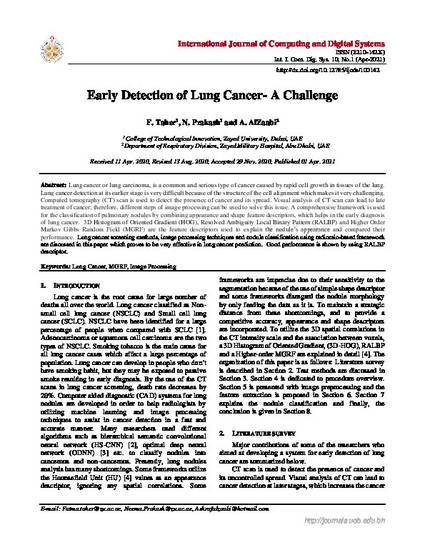
Lung cancer or lung carcinoma, is a common and serious type of cancer caused by rapid cell growth in tissues of the lung. Lung cancer detection at its earlier stage is very difficult because of the structure of the cell alignment which makes it very challenging. Computed tomography (CT) scan is used to detect the presence of cancer and its spread. Visual analysis of CT scan can lead to late treatment of cancer; therefore, different steps of image processing can be used to solve this issue. A comprehensive framework is used for the classification of pulmonary nodules by combining appearance and shape feature descriptors, which helps in the early diagnosis of lung cancer. 3D Histogram of Oriented Gradient (HOG), Resolved Ambiguity Local Binary Pattern (RALBP) and Higher Order Markov Gibbs Random Field (MGRF) are the feature descriptors used to explain the nodule’s appearance and compared their performance. Lung cancer screening methods, image processing techniques and nodule classification using radiomic-based framework are discussed in this paper which proves to be very effective in lung cancer prediction. Good performance is shown by using RALBP descriptor.
- Image Processing,
- Lung Cancer,
- MGRF
Available at: http://works.bepress.com/fatma-taher/1/
